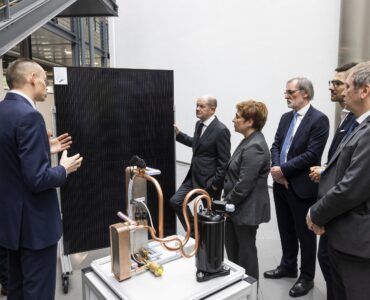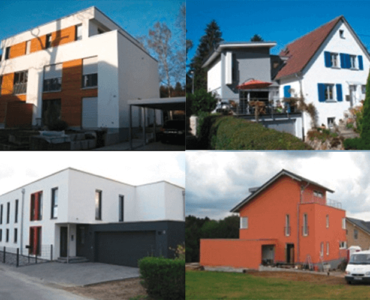Episode 6 of a series on heat pumps in existing buildings with two exemplary houses
Good examples make complex topics more accessible. But what would be a “good” example of an old building with a heat pump? A “good” building would be an extensively renovated house. Such a building, however, does not pose a challenge for a heat pump. In well-refurbished houses – which are, of course, the long-term goal for the entire building stock – heat pumps operate with similar efficiency and viability as in new buildings. Thus, we have selected two buildings that are rather “bad” examples from an energetical point of view for this blog post. On the other hand, they are typical representatives of houses that have not been refurbished, or have been renovated only slightly, but still achieve good results with heat pumps.
Both houses are clearly old buildings, built 84 and 48 years ago respectively. Both are located in the coldest climate zones in the southeastern part of Germany. Heat pumps were installed in both houses about five years ago, and they heat both the rooms and the domestic water. Neither building has underfloor heating.
The profile of the first example house:

In this older, detached single-family house, hardly any renovation measures have been implemented. Neither the walls nor the roof have been insulated. Only the windows have been replaced to meet today’s standards. Accordingly, this building has a very high heating energy demand. 207 kWh per m² were calculated in the year of the evaluation.
At the time of the installation of the outdoor air heat pump, the radiators were also replaced. So-called fan convectors were installed. With this type of radiator, the necessary flow temperatures can be reduced even more significantly than with conventional convectors. They are particularly well suited for use in heat pump systems.
Despite the high heating demand, the outdoor air heat pump in this building achieved a good efficiency of 3.0. The direct-electric back-up heater hardly worked at all (less than 1%). Before the heat pump was installed, the house was heated directly-electrically with night storage heating. Thus, with very few additional measures, the replacement resulted in significant cost and CO2 savings.
The profile of the second example house:

An oil boiler was exchanged for a ground source heat pump with geothermal boreholes in the second building in 2009. Both the walls and the windows are still in their original condition. The roof of the house was newly insulated well before the heating system was replaced back in 1990. The measured annual heating consumption of about 100 kWh per m² corresponds approximately to the average of the building stock in Germany.
The heat pump system has been continuously measured within a monitoring project for several years. Although the system has the second highest average flow temperatures within the 15 ground source heat pumps studied – about 45°C – the efficiency of the heat pump is about 3.7, and annual fluctuations are minimal. As with nearly all ground-source heat pumps, the direct-electric back-up heater was not used at all.
Heat transfer takes place via classic panel radiators, which were not replaced when the heat generator was replaced. The heated living space measures 170 m². According to the residents, the monthly electricity bill for the total electricity consumption, i.e. all electrical appliances including the heat pump, is about 120€.
The two examples show impressively that heat pumps can achieve good efficiency even in houses that have not been refurbished or have only been partially renovated. In both examples, no unusual installations are used. Both houses are representative for many similar buildings, architecturally, in terms of the building fabric and in terms of the heat pump technology used.
The case of the first house also demonstrates how targeted and relatively inexpensive measures (such as replacing the radiators) can achieve a great effect. Other cases show, however, that such renovation measures can also be carried out several years after the installation of the heat pump and the house still achieves good efficiency values. In the final report of the research project “WPsmart im Bestand” (in German), these and the other houses studied are described and analyzed in detail.
In the next episode of this blog, we will investigate the role of heat pumps in the future, climate-neutral energy system: How ecological can heat pumps work in existing buildings?
Further reading:
Overview on the range of applications for heat pumps.
Episode 5 of this series: How much does the use of back-up heaters reduce the efficiency of heat pumps?
Episode 4 of this series: How well do heat pumps really work in existing buildings?
Header picture ©Pixabay
This blog post is financially supported by the Climate Neutrality Foundation.





Add comment